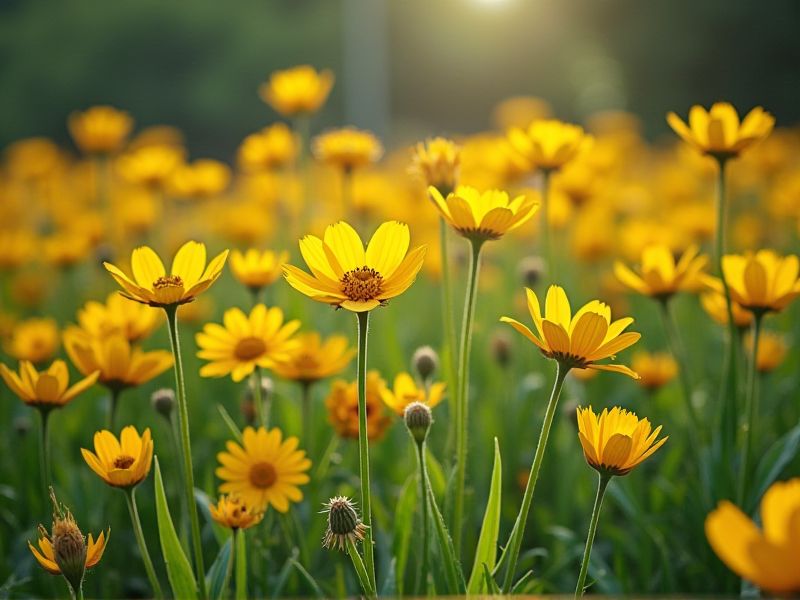
Low-maintenance plants ideal for drought conditions include succulents, lavender, and agave, which thrive in arid environments. Succulents, such as aloe vera and jade plants, store water in their leaves, making them highly resilient during dry spells. Lavender not only adds fragrant beauty to your garden but also attracts pollinators and requires minimal watering once established. Similarly, agave plants provide striking architectural features and can withstand extreme heat, making them perfect for xeriscaping. Incorporating these plants into your outdoor space can create a vibrant, sustainable garden that flourishes with minimal care.
List of some Low-maintenance plants that survive drought
- Snake Plant (Sansevieria trifasciata)
- ZZ Plant (Zamioculcas zamiifolia)
- Jade Plant (Crassula ovata)
- Aloe Vera (Aloe barbadensis miller)
- Agave (Agave americana)
- Pothos (Epipremnum aureum)
- Bunny Ear Cactus (Opuntia microdasys)
- Sedum (Sedum spp.)
- Yucca (Yucca filamentosa)
- Pencil Cactus (Euphorbia tirucalli)
Important things about Low-maintenance plants that survive drought
Drought-Tolerant Characteristics
Low-maintenance plants that survive drought are essential for water-wise gardening and landscape design. Varieties such as succulents, lavender, and ornamental grasses exhibit remarkable drought-tolerant characteristics, requiring minimal irrigation once established. These resilient plants possess adaptations like thick, waxy leaves that minimize transpiration and deep root systems that access groundwater. Incorporating these drought-resistant selections into your garden not only conserves water but also enhances the overall aesthetic with their vibrant colors and textures.
Native Plant Options
Native plants like succulents, sagebrush, and agave are excellent choices for low-maintenance landscaping that thrives in drought conditions. These resilient species are adapted to local climates, requiring minimal watering and care once established. Incorporating plants such as California poppy and lavender not only enhances your garden's beauty but also supports local pollinators and wildlife. Selecting these drought-resistant natives can significantly reduce your water usage while creating a sustainable and vibrant outdoor space.
Watering Frequency
Low-maintenance plants that thrive in drought conditions typically require watering every two to four weeks, depending on the climate and soil type. Consider succulents such as Agave or Aloe, which store water in their leaves, enabling them to endure extended dry spells. Native grasses like Blue Grama or ornamental plants like Lavender have adapted root systems that tap deeper groundwater, providing resilience against drought. By selecting these drought-resistant options, you can enjoy a lush garden with minimal watering hassle.
Soil Requirements
Low-maintenance plants that thrive in drought conditions often prefer well-draining soil to prevent root rot. Sandy or loamy soils enriched with organic matter can provide the necessary aeration while retaining enough moisture for these resilient species. Incorporating mulch can help regulate soil temperature and minimize moisture evaporation, further supporting your drought-tolerant plants. Choose native species like succulents or drought-resistant perennials, as they are adapted to local soil conditions and require minimal intervention.
Sunlight Needs
Low-maintenance plants such as succulents and native grasses thrive in drought conditions and require minimal care. Examples include the resilient Agave and the hardy Sedum, both known for their ability to store water, making them perfect for arid gardens. Incorporating these plants not only conserves water but also enhances your landscape with unique textures and colors. Choosing drought-resistant flora ensures that your garden remains vibrant and healthy even in dry spells.
Growth Habits And Sizes
Low-maintenance plants that thrive in drought conditions often exhibit deep root systems, which help them access underground moisture, making them resilient in arid environments. Varieties such as succulents, lavender, and ornamental grasses typically have compact growth habits with sizes ranging from small ground covers to taller focal points in gardens. Their ability to store water in their leaves and stems allows these plants to endure prolonged periods without rainfall while maintaining vibrant foliage and blooms. Incorporating these drought-resistant species into your landscape not only conserves water but also reduces gardening maintenance, creating a sustainable and visually appealing outdoor space.
Pest And Disease Resistance
Low-maintenance plants that resist pests and diseases are ideal for sustainable gardening, especially in drought-prone areas. Species such as lavender, agave, and succulents exhibit remarkable drought tolerance while naturally repelling pests, reducing the need for chemical treatments. These plants thrive in arid conditions by efficiently storing water, allowing them to endure long periods without rainfall. By incorporating these resilient varieties into your landscape, you can create a beautiful, low-water garden that supports biodiversity and minimizes maintenance efforts.
Fertilization Requirements
Low-maintenance plants that thrive in drought conditions typically require minimal fertilization, making them ideal for water-conscious gardeners. These plants, such as succulents, native grasses, and certain herbs, are well-adapted to arid environments, often relying on nutrient-poor soils. When fertilization is necessary, a slow-release organic option or a diluted liquid fertilizer during the growing season can enhance growth without overwhelming the plant. Understanding your specific plant's nutrient needs ensures they grow strong while conserving resources and reducing maintenance.
Seasonal Changes
When selecting low-maintenance plants that thrive in drought conditions, consider succulents like Sedum and Echeveria, known for their water-storing capacities and vibrant colors. Native grasses such as Blue Grama and Buffalograss not only withstand dry spells but also enhance your landscape's biodiversity. You can also explore ornamental herbs like Thyme and Oregano, which require minimal watering once established and produce fragrant foliage beneficial for cooking. These plants are ideal for promoting sustainability and conserving water in your garden, ensuring resilience through seasonal changes.
Propagation Methods
Low-maintenance plants that thrive in drought conditions can be propagated through simple methods like stem cuttings and division. For instance, succulents such as sedum and echeveria are easily propagated by taking healthy leaf or stem cuttings and allowing them to root in well-draining soil. Perennials like daylilies and ornamental grasses can be divided every few years to create new plants that require minimal water and maintenance. By selecting native drought-resistant species, you not only conserve water but also support local ecosystems.
